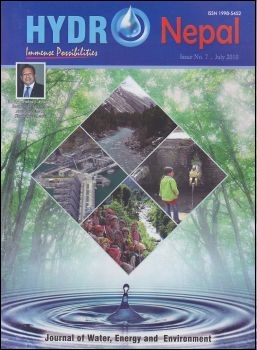Water Storage for Food Security in Nepal
DOI:
https://doi.org/10.3126/hn.v7i0.4234Keywords:
Integrated Water Resources Management (IWRM), Irrigation, Water storage, Agriculture intensification, NepalAbstract
Increasing trend of water scarcity for drinking, irrigation, hydropower generation and other purposes has been a serious challenge for Nepal. As food need rises, the country's reliance on irrigated agriculture increases. The existing run-of-river types of irrigation systems provide little leverage in providing adequate, timely and equitable water supply to the farmers' fields. With the approval of the 2002 Water Resources Strategy, the country is in the process of changing its water development paradigm from sect oral to integrated water resource management. In this context, intensification of agriculture is the most viable option of achieving food security and this requires assured supply of irrigation water which is possible mainly through water storage systems.
Key words: Integrated Water Resources Management (IWRM); Irrigation; Water storage; Agriculture intensification; Nepal
DOI: 10.3126/hn.v7i0.4234
Hydro Nepal
Journal of Water, Energy and Environment
Vol 7, July, 2010
Page: 35-37
Uploaded date: 31 January, 2011
Downloads
Downloads
How to Cite
Issue
Section
License
The copyright of the articles and papers published is held by HYDRO Nepal Journal.
The views and interpretation in this journal are those of author(s), and HYDRO Nepal does not bear any responsibility for the views expressed by authors in the journal.




